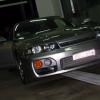Help Needed Fast
Announcements
-
Similar Content
-
Latest Posts
-
There would have to be hundreds of posts on the topic of doing the direct wire mod just on SAU alone. Just search SAU specifically, using google, and you should find stuff. Even just recently I have posted excerpts from the wiring diagrams, which are also all available, and discussed exactly how the FPCM does its job - mostly wrt how it interacts with the ECU/ignition wiring. But still, the info is there and relevant. Just search for posts by me on the topic in the last several months.
-
By joshuaho96 · Posted
I wouldn't trust the tow hook to hold. I would rather use a floor jack on the pinch welds. Honestly, I think your best bet at this point is quickjacks or similar. -
Thanks, I'll give that a go. Hard pass on the steel bushings though 😄
-
By Dose Pipe Sutututu · Posted
LOL.... a good amount of people (not all) on that continent seem to know everything and like to measure things in bananas, football fields, statue of liberties instead of the metric system lol. -
By iain_ST44GA · Posted
I assume the modules are similar enough, so if you've had no issues I don't see why I would. I have tried to find a wiring diagram for the FPCM / fuel pump circuit, but I can't find it anywhere. Otherwise, I would just do some wire cutting and joining at the FPCM and give the 12 V supplied to the FPCM directly to the pump instead. If you know anyone that could help with wiring diagrams, I'd be very happy
-





.thumb.jpg.1b7f9b555236b5ea56c3fed20c733de8.jpg)
Recommended Posts
Create an account or sign in to comment
You need to be a member in order to leave a comment
Create an account
Sign up for a new account in our community. It's easy!
Register a new accountSign in
Already have an account? Sign in here.
Sign In Now